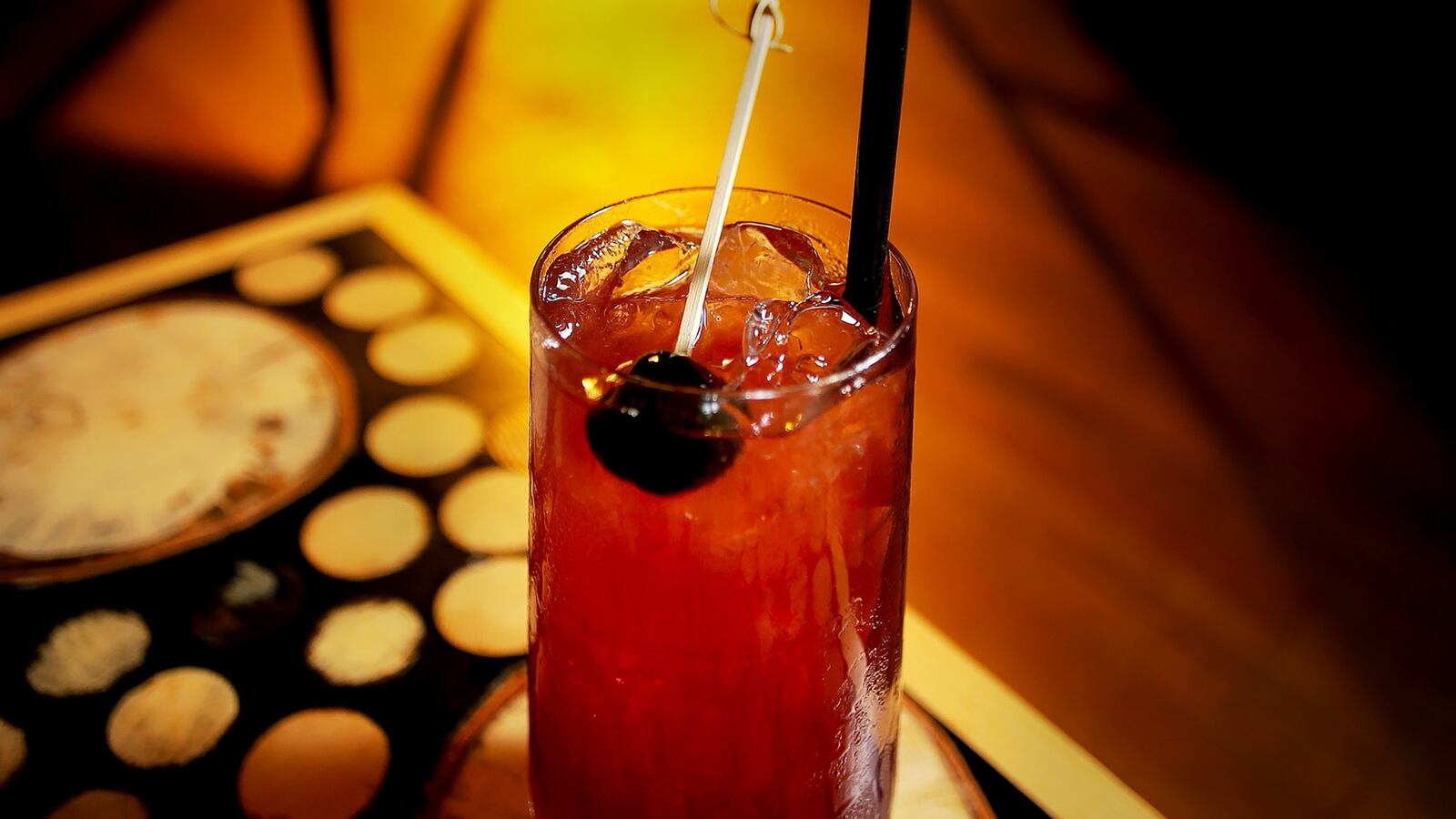Whether you prefer your Manhattan made with rye or bourbon, there is one thing we can all agree on: the deliciousness of a cherry garnish.
And these days, in better bars everywhere, more often than not that final flourish isn’t an electric-red ice cream sundae topper, but a sweet-but-not-too-sweet candied fruit from Luxardo.
In fact, the Italian company’s maraschino cherries are so popular with serious cocktail drinkers that their name has practically become synonymous with the ingredient.
Luxardo started making the cherries back in the 1880s, in what is today Zadar, Croatia. That was during the height of their popularity says Greg Boehm, who owns a vast library of drinks books and is founder of Cocktail Kingdom, which produces fine reproductions of many historical mixology tomes.
Cherries were common from the 1860s to 1899 when olives replaced them. Boehm cited an article from June 22, 1899, that ran in The Racine Daily Journal, to support his opinion: “In some of the swell uptown establishments the cocktail olive is getting in its work and bids fair to supplant the toothsome cherry with the public.”
So it’s no wonder that good cherries were hard to find for decades. Modern American tipplers didn’t rediscover Luxardo’s garnish until 2004, when famed bartender Audrey Saunders received four jars of them to use in her legendary New York watering hole Pegu Club. Bartenders never looked back. If you planned to serve a cherry garnish anywhere in the five boroughs from then on, it had better have been a very good one.
Maraschino liqueur, Luxardo’s other signature product, has been around even longer, debuting in 1821—the year when Girolamo Luxardo and his wife, Maria, started the company. (The couple had moved to Zadar, then known as Zara, a few years earlier from Genoa.) Zara was known for sour marasca cherry-based rosolio maraschino liqueur, but the Luxardo family came up with its own recipe and packed the concoction in a distinctive straw-covered bottle. (Though their formula is a secret, they have admitted that it is void of rose petals, a traditional ingredient in the area’s original liqueur.)
While the bracing spirit is a necessary component of classic cocktails like the Last Word, the Aviation, and the Martinez, it was nearly forgotten by modern bartenders and drinkers. Today, however, the best craft cocktail bars around the country use the liqueur regularly.
But ironically enough, it isn’t at all popular with drinkers in its home market of Italy, where it is used mostly by bakers and as a topping for fruit salads. That wasn’t always the case.
Around the turn of the 20th century it was in much greater demand. So much so that, in 1913, the Luxardo family built a large distillery, which also served as their home, right on Zara’s harbor.
Charles H. Baker wrote in his legendary spirited travelogue The Gentleman’s Companion, which was first published in 1939, that “maraschino is so essential that no fairly equipped bar can afford to be without it.”
That all changed with the outbreak of World War II. In 1943, allied forces bombed Zara, which, at that point, was part of Italy. An inferno waiting to happen, thanks to all its stored alcohol, the family’s facility burned for four days. Tito’s communist partisans soon took it over, killing several family members, whose bodies were never recovered. Giorgio Luxardo, Girolamo’s great-grandson, and the company’s master distiller fled to Italy.
Giorgio was determined to restart the company from scratch. While the family lost just about everything, they were able to rescue a recipe book and, according to legend, a single cherry sapling. Ultimately they settled in the Veneto region, which has acidic volcanic soil. “It’s perfect soil for the cultivation of the 30,000 cherry trees we have in the area,” says Matteo Luxardo, the company’s current export manager and Giorgio’s grandson.
Location meant everything. Situating his facility outside of a city this time, Giorgio reasoned that if a war should break out again, it would be unlikely that their distillery would be bombed.
Over the following decades, the demand for maraschino liqueur waned. But as Italian restaurants began to flourish around the world, the family eked out a living by selling its other classic Italian liqueurs, including sambuca, grappa, and limoncello. Not ready to abandon their signature, they continued to produce their maraschino liqueur and cherries—hoping all the while that bartenders would turn back to it one day. Fortunately that day has come.
“The Luxardo brand is the gold standard here and always has been,” wrote David Wondrich in his 2007 award-winning book Imbibe!, which has become necessary reading for the current generation of bartenders.
Luxardo has been so successful that it’s inspired a number of bars to make their own cherries in-house and other firms, like the Italian Fabbri and even Kentucky’s Woodford Reserve, have introduced versions.
No doubt Girolamo and Maria are thrilled that cherry garnishes and liqueur are back in vogue—and wondering what took so long.






